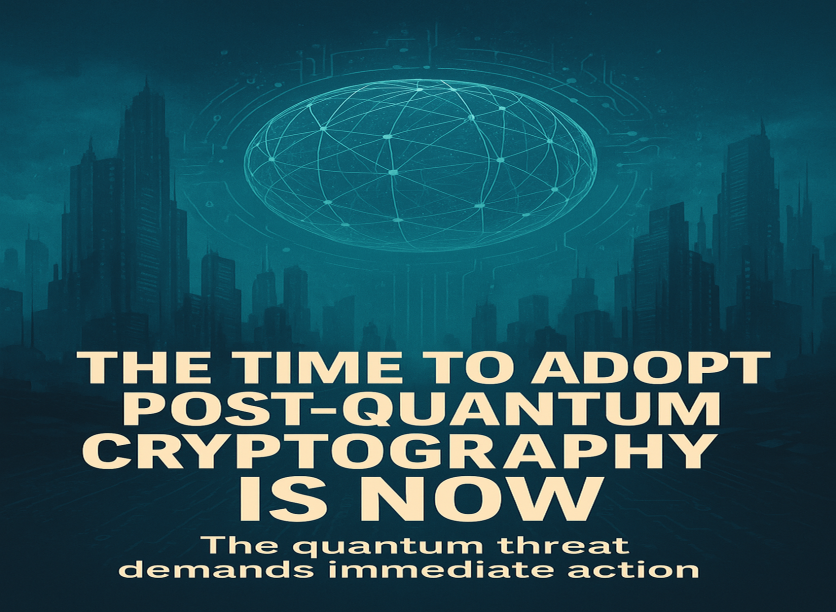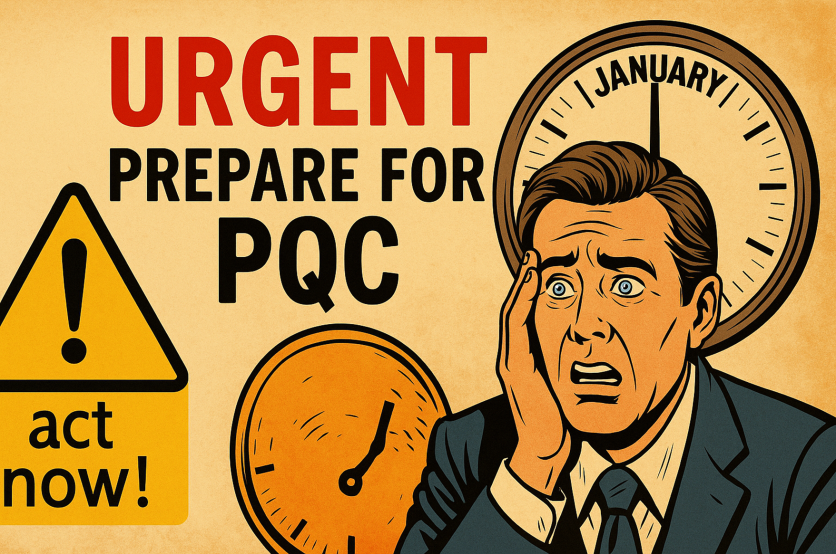
The Urgency
Every era of technology faces a turning point. For cybersecurity, that moment has arrived. Quantum computing is evolving rapidly from academic theory to engineering reality, and its impact on modern encryption will be profound.
Each day, engineers and security leaders strengthen systems, rotate secrets, and improve cryptographic libraries. Yet an invisible clock is ticking. Quantum computing will soon challenge the very algorithms that protect confidentiality, integrity, and trust across digital systems.
This is not a distant concern. Attackers are already collecting encrypted data today, waiting for the day quantum computers can decrypt it instantly. Known as harvest now, decrypt later, this threat makes every delay in readiness costly.
Post Quantum Cryptography represents the next foundation for digital trust. It is not just an upgrade but a transformation that ensures resilience for the next generation of technology.
Mr. Arun Kumar Elengovan is the Director of Engineering Security at Okta, a global leader in identity and access management. With more than 15 years of experience in cybersecurity, he has led transformative initiatives across secure software development, cryptography, key management, AI and LLM security, cloud security, web security, Role-Based and Attribute-Based Access Controls, DDoS, and risk mitigation.
He is a Fellow of the British Computer Society (BCS), a Distinguished Fellow of the Soft Computing Research Society (SCRS), a Fellow of the Institution of Electronics and Telecommunication Engineers (IETE), and a Senior Member of the IEEE. Arun also serves as a Gartner Information Security Ambassador and is a member of the prestigious Forbes Technology Council.
An award-winning cybersecurity leader, Arun has been recognized globally for his contributions to secure engineering and technology leadership. He received the SCRS WUST Global Excellence Award for Next Generation Computing for advancing innovation in security architecture and cryptographic resilience, and the Times Leadership Award for Excellence in Cybersecurity Leadership, presented by the Deputy Chief Minister of Uttar Pradesh, India, for his impact in strengthening cybersecurity strategy, AI-assisted security, and organizational resilience. His expertise spans post-quantum cryptography readiness, LLM security, vulnerability reduction, and engineering security operations.
The Quantum Momentum
Quantum computing is no longer experimental fiction. IBM, Google, and other technology leaders have built systems that can process multiple states simultaneously using qubits. Through superposition and entanglement, these machines explore vast possibilities at once.
When scaled, they will execute algorithms such as Shor's that can break RSA and ECC encryption, which secure nearly every system in use today. Attackers are already storing encrypted data in anticipation of this future. The time to prepare is now.
The Elixir We Are Brewing
Post Quantum Cryptography provides the mathematical foundation for future resilience. In 2024, the United States National Institute of Standards and Technology introduced three new federal standards:
- FIPS 203 (ML-KEM) for key establishment, based on CRYSTALS Kyber
- FIPS 204 (ML-DSA) for digital signatures, based on CRYSTALS Dilithium
- FIPS 205 (SLH-DSA) for hash-based signatures, based on SPHINCS+
NIST is also advancing FALCON and HQC, ensuring diversity across lattice, hash, and code-based mathematics. This diversity reduces dependency on any single algorithmic class.
Global adoption has already started. Google and Cloudflare tested hybrid TLS sessions combining Kyber with classical X25519, showing early success in performance and compatibility. The United States government's Commercial National Security Algorithm Suite 2.0 targets full transition to quantum-resistant systems by 2035.
For enterprises, PQC adoption will focus on:
- Using ML-KEM for secure session establishment
- Using ML-DSA for signing and identity validation
- Using SLH-DSA for long-term data integrity
- Preparing for Falcon and HQC once finalized
PQC is not a simple change in encryption. It is the reinvention of digital trust.
Readiness as a Cure

Quantum readiness requires foresight, structure, and execution. A simple equation defines urgency:
If X + Y > Z, you are already late.
Where
- X is how long your data must remain confidential.
- Y is how long migration will take.
- Z is the number of years until quantum computers can break current cryptography.
The National Security Agency's CNSA 2.0 framework recommends that new software and firmware begin using quantum-resistant algorithms by 2025 and complete migration by 2035. Even for private enterprises, this serves as a clear planning signal.
How to Begin
- Identify and document cryptography across systems, products, and third parties.
- Prioritize by data lifespan to secure long-term sensitive information.
- Design for cryptographic agility through abstraction and service layers.
- Adopt hybrid models to enable classical and quantum safe coexistence.
- Engage vendors early to align with their PQC roadmaps.
- Govern with metrics for algorithms, certificates, and library usage.
- Pilot and refine through measured, low-risk deployments.
Readiness is not a single project. It is a continuous discipline that strengthens with each iteration.
Learning Through the Loop
Achieving quantum readiness is a process of experimentation and improvement. Each cycle brings better insight and stronger defense.
Start by testing ML-KEM within TLS 1.3. Measure handshake time, CPU usage, and key size. PQC algorithms such as Kyber and Dilithium already perform efficiently for real-world workloads.
Run drills for key rotations and certificate renewals at post quantum scales. Simulate misconfigurations and validate rollback procedures. These exercises develop confidence before production rollouts.
Audit the supply chain. Evaluate every dependency and vendor for PQC adoption readiness. Require proof of testing and validation.
Maintain diversity in algorithms. Avoid reliance on a single mathematical family. Monitor NIST progress on Falcon and HQC to ensure future adaptability.
Quantum readiness is achieved through repetition and continuous improvement, not a single implementation.
The True Digital Elixir
Quantum computing will accelerate breakthroughs in science and industry, but also threatens the cryptographic foundations that secure digital life.
Post Quantum Cryptography is the engineering response to that challenge. The true elixir of our digital lives is not one algorithm or policy. It is the discipline to prepare early, the courage to act before urgency turns into crisis, and the persistence to evolve continuously.
Organizations that thrive in the quantum era will not be those that wait. They will be the ones who treat readiness as a mindset and protect digital trust before it is tested.
The views and opinions expressed in this article are the author's own and do not necessarily reflect those of any affiliated organizations or institutions.
ⓒ 2025 TECHTIMES.com All rights reserved. Do not reproduce without permission.





